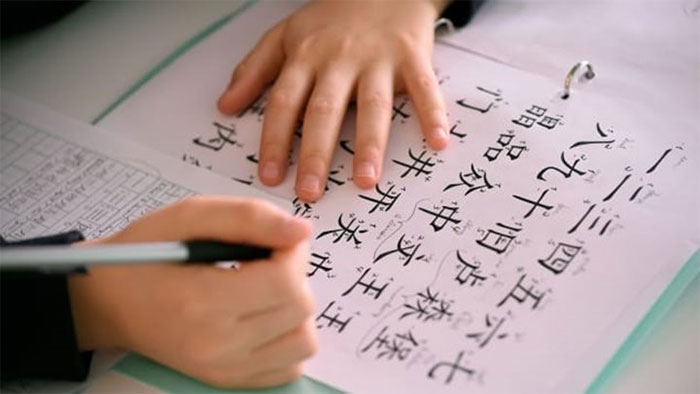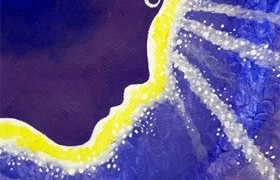Most of us yearn to expand our consciousness and worldview, and to achieve this, learning a foreign language is one of the most obvious and wise choices.
This article reflects the personal views of writer John Malathronas from CNN.
This is something I can attest to personally: by the age of 12, I could speak German, Greek, and English, which made language a passion and hobby for me. My advice is that you should learn a language because it will also make you interested in the culture and country associated with it.
If you enjoy Tolstoy and Dostoevsky, learn Russian; if you plan to live in Bangkok, learn Thai; if your “other half” is Mexican, learn Spanish.
And remember: While your trips abroad may last only a few weeks, mastering a language is a long-term commitment that takes years, not just months.
Language and Diplomacy
After World War II, the United States expanded its influence worldwide by training its embassy staff to learn the local languages of the countries where they were stationed.
Accordingly, the Foreign Service Institute (FSI) of the United States has classified the difficulty of languages by levels for English speakers.
Here are some examples, listed in order of the average number of hours learners need to achieve proficiency in each language.
Easiest (about 600 hours)

After just 600 hours of study, you will have no difficulty strolling the streets of Paris. (Photo: PHILIPPE LOPEZ).
Along with Dutch and Norwegian, popular Romance languages such as Italian, French, Spanish, and Portuguese require about 600 hours of study to achieve a “general professional proficiency” in speaking and reading skills.
Within this group, Spanish and Italian are the easiest for native English speakers, followed by Portuguese, and finally French.
These languages share a relatively similar vocabulary with English, but this commonality can lead to a situation known as “false friends,” where vocabulary in different languages may look and sound similar but have significantly different meanings. For example, in Spanish, a woman who is “embarazada” is pregnant, while “préservatif” in French does not mean food but refers to a condom.
While French and Italian have been quite standardized, for Spanish, you will need to choose between Latin American Spanish or “castellano” (commonly used in Spain), which differ quite a bit, similar to the distinction between American English and British English.
The options are even more diverse with Portuguese. A long time ago, I decided to try my hand at Brazilian Portuguese, and to this day, I still cannot fully understand what native speakers from Portugal say.
German (750 hours)
If you want to immerse yourself in Karl May’s “Wild West” novels in their original language, you will first need to dedicate 750 hours to mastering German. (Photo: Sean Gallup).
One of my German teachers once joked that you would spend a year just saying “I am on the bus, but once you get on that bus, it will be fine.”
Vocabulary is divided into masculine, feminine, and neuter, and verbs are conjugated extensively with extremely strict syntactic requirements, making German seem like a torment when you first start.
However, pronunciations and spelling are not too complicated; once you grasp the rules (admittedly, the amount of knowledge is substantial), everything becomes quite straightforward.
Once you have a reasonable grasp of the language, you will begin to understand why Germans never interrupt during a conversation: They are waiting to hear the verb at the end of the sentence to fully comprehend what you are discussing.
Malay and Swahili (900 hours)
Malay serves as a lingua franca in several Southeast Asian countries and has been simplified as a second language for non-native speakers.
For example, the plural in Malay is formed by repeating a word twice – buku means book, and buku-buku means many books.
Similarly, Swahili developed as a language for trade in East Africa and incorporates Arabic vocabulary based on African grammar.
Hungarian (1,100 hours)
If you want to challenge yourself further, try learning Hungarian. It is unlike any European language you have ever heard, except for Basque.
I remember a conversation with a friend who claimed that “the characteristic of nouns is inflection while verbs are conjugated,” but that is not true for Hungarian, where nouns can be inflected or conjugated, sometimes both at the same time.
You indicate possession (my garden, your garden, his garden, etc.) by adding a suffix to the noun for garden.
In that case, “your garden” becomes “gardenest” and “his garden” becomes “gardeneth.”
You might wonder how double possessives would work, such as “my mother’s garden’s flowers” or the difference between singular and plural combinations. But honestly, at this stage, I had to give up.
Greek (1,100 hours)

Your upcoming trip to Greece will be much more meaningful if you take some time to learn Greek.
Modern Greek is perhaps the easiest language to learn, as it uses a different alphabet.
There is an interesting book titled “Learn Greek in 25 Years,” but you will actually be surprised at how simple it is to learn the alphabet of this language. This is because Greek is also a rich source of vocabulary for English.
Indeed, in 1957, Xenophon Zolotas, then Governor of the Bank of Greece, delivered two speeches in English before the IMF, notably containing only English words of Greek origin, of course, accompanied by necessary English structural words.
Russian (1,100 hours)
A significant advantage of learning Russian is that once you become proficient, you can understand other Slavic languages like Czech, Polish, or Bulgarian.
This language is also fundamentally used in all the former Soviet Union countries, from Armenia to Kyrgyzstan.
Behind the mysterious curtain of the Cyrillic alphabet lies one of the most challenging language systems to master, so much so that many Russians even make mistakes when speaking it.
However, anyone who loves world literature, music, ballet, or even ambitious astronauts (Russian is a required subject at NASA) should consider learning this language system, which boasts over 500,000 words (some of which are as long as 38 characters).
Arabic (2,200 hours)

An average native English speaker needs 2,200 hours to master Arabic.
There’s a funny story that people share about a pharmaceutical company that advertised a painkiller using three wordless images to easily reach users worldwide.
The image on the left depicts a woman suffering from a headache. The middle picture shows her swallowing a pill, and the one on the right features her smiling after the pain subsides.
The meaning of the message was conveyed accurately everywhere, except in the Arab world, where people read from right to left.
The reading direction and the cursive writing style, where characters are connected and may or may not include vowels, are two significant barriers for those wanting to learn Arabic.
Classical Arabic (the language used in the Qur’an) will help you understand everywhere, but colloquial Arabic can be more useful because once locals start conversing, you’ll struggle to keep up with the core of the dialogue.
But who can resist a language with 11 words for love, 5 levels of swearing, and nearly 100 words to describe a camel?
Japanese (2,200 hours)
This is a country that has added much color to the world with sushi, karaoke, and manga, creating a vast number of “devotees” globally, especially among gamers and those with quirky tastes.
However, that admiration comes with the challenge of a language that is extremely “difficult,” utilizing characters borrowed from Chinese (Kanji) that have drifted far from their original meanings, along with two syllabaries, Hiragana and Katakana, which you must learn to use in context appropriately.
Additionally, counting objects in Japanese can be a “nightmare” for many because it depends on the characteristics of the items, leading to different counting methods, such as long and thin (stick), small and round (apple), thin and flat (sheet of paper), wide and flat (carpet), and hundreds of other types.
What you say will also depend on your gender. There’s a more “masculine” language for men and a more “elegant” one for women, but you need to understand both.
Cantonese or Mandarin (2,200 hours for each language)

One of the challenges of mastering Mandarin is learning all the characters.
Each Chinese dialect is essentially a distinct language, but Mandarin (Putonghua in Chinese, meaning common language) is considered the official language in modern China. They all share (basically) an evolving writing system, known as 書面語 (written language), created to manage a diverse and vast country.
Things become even more complicated with two main types of Chinese characters used in the same writing system: traditional characters used in Hong Kong and Taiwan, and simplified characters used in mainland China (standardized and simplified in the 1950s to promote literacy nationwide).
For example, “to fly” is written as 飛 in traditional characters and 飞 in simplified characters. Essentially, they are the same character written in two different ways but pronounced differently in different dialects.
Are you starting to feel confused?
Each character, when spoken, can be unintelligible between a Mandarin speaker in Beijing and a Cantonese speaker in Hong Kong. If you think that’s strange, try to imagine this: the numeral “9” is recognized globally, but it is pronounced “nine” in English and “devet” in Slovenian.
Each word must be memorized individually because you cannot guess its pronunciation just from the writing. Meanwhile, dictionaries list words by stroke count, ranging from 1 to over 60 strokes, with some ancient characters like zhé having up to 64 strokes.
And then there are the challenges of pronunciation.
During the British Empire, if you were sent to Hong Kong as a civil servant, you had to pass a music test first because all Chinese languages are tonal.
There are four tones in Mandarin: high (like G in a musical scale), rising (like from C to G), falling (from G to C), and falling then rising (C to B to G), and if you’re finding this “hard to swallow,” then you’d be disheartened to know that there are nine tones in Cantonese.
In Mandarin, there’s even a poem titled “The Lion-Eating Poet in the Stone Den” that repeats the syllable “shi” 107 times with various tones.
In other words, if you are the type of person who is “tone-deaf,” unable to distinguish between high and low sounds, then giving up right now might be a reasonable choice.




















































